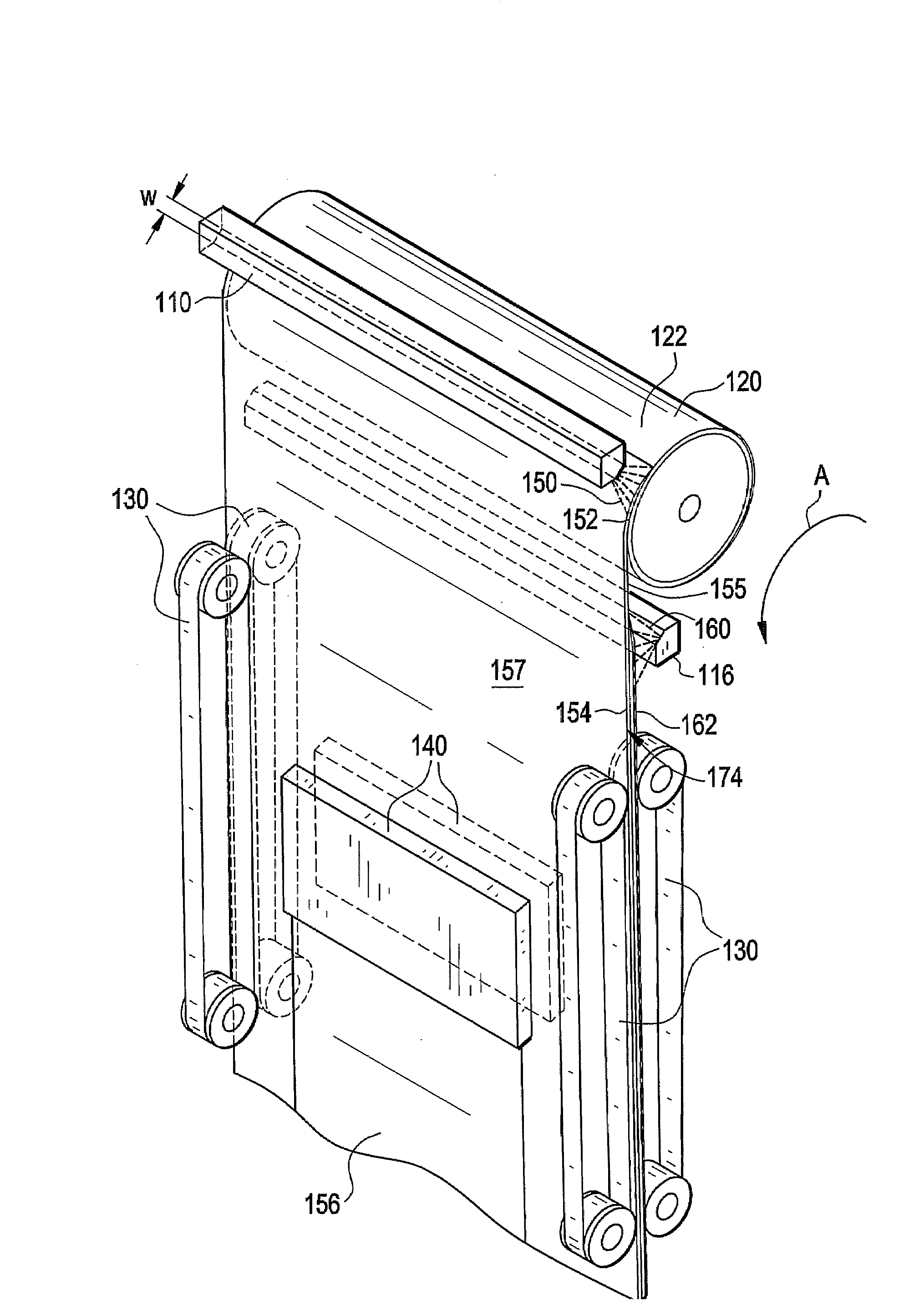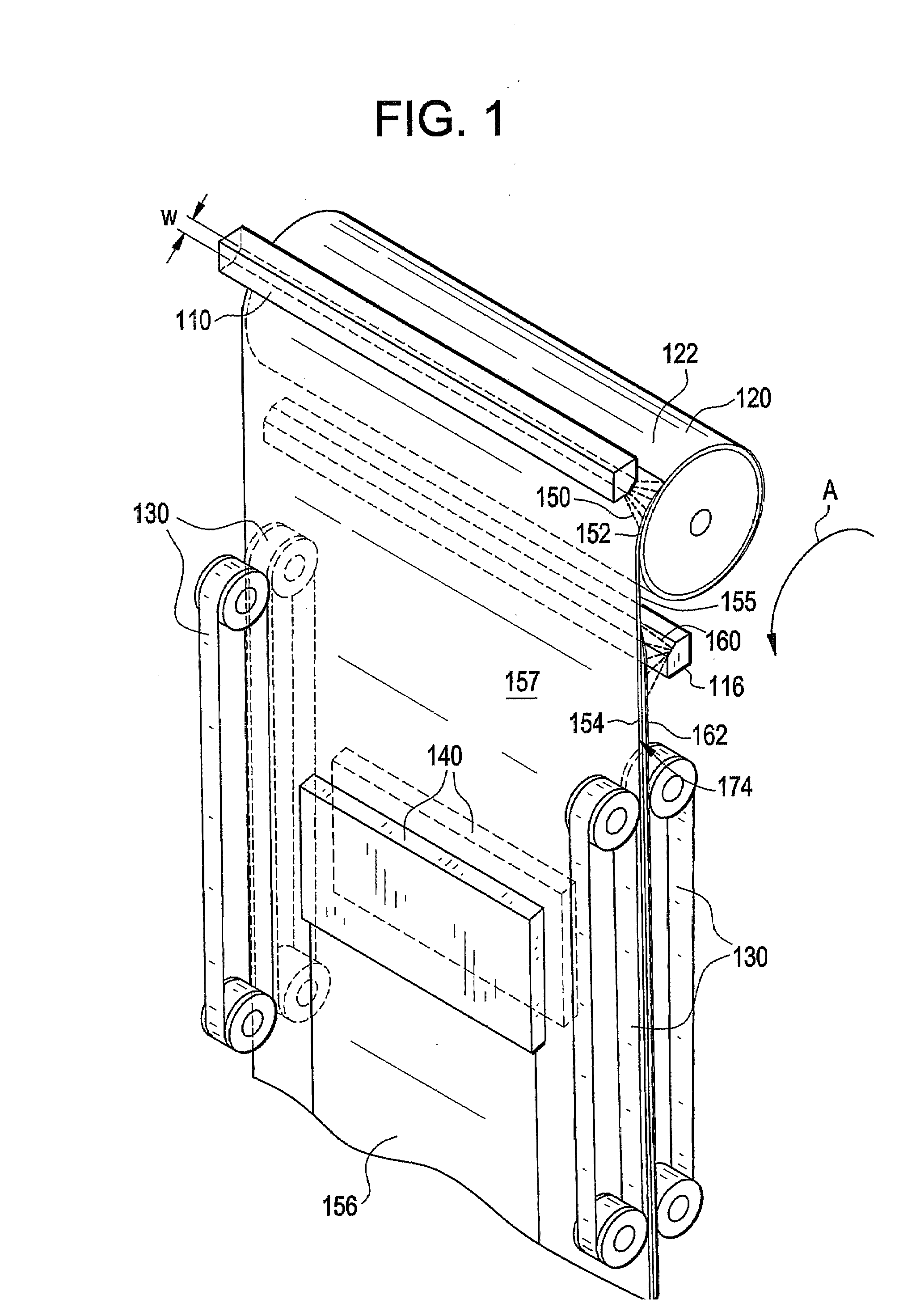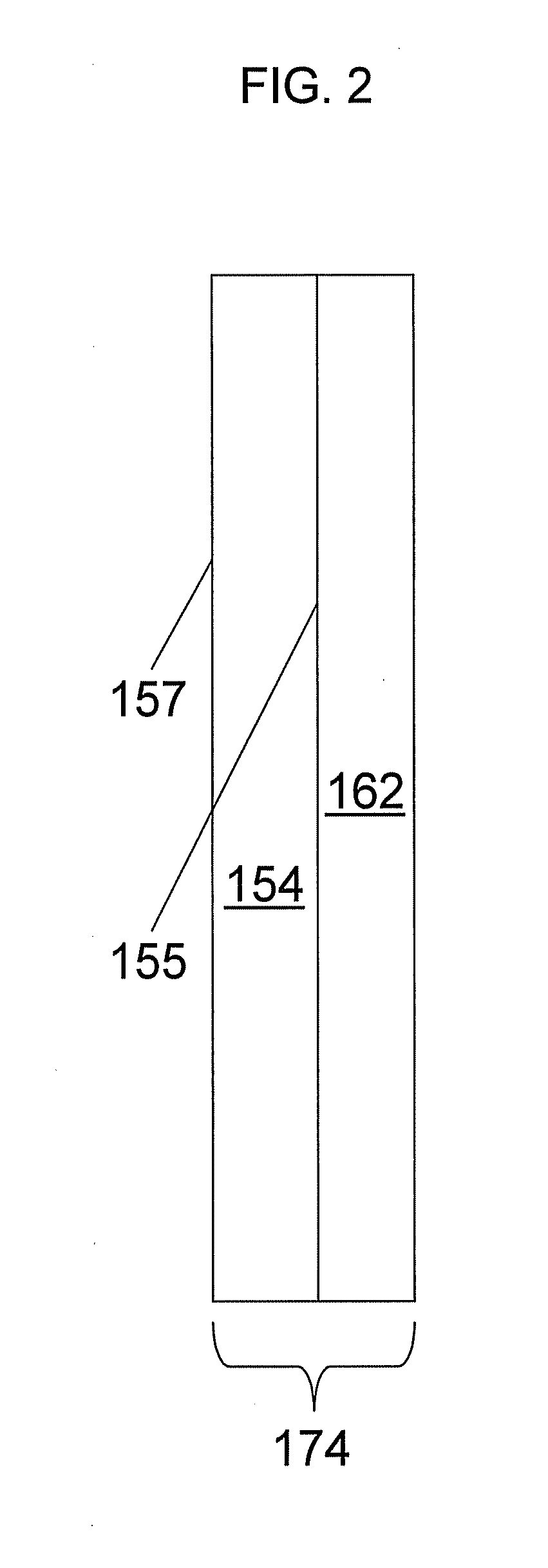Roll-to-roll glass: touch-free process and multilayer approach
a technology of glass and rolling glass, applied in the field of glass sheets, can solve the problems of unsatisfactory surface quality, added expense, and unsatisfactory interface contamination,
- Summary
- Abstract
- Description
- Claims
- Application Information
AI Technical Summary
Benefits of technology
Problems solved by technology
Method used
Image
Examples
Embodiment Construction
[0014]An apparatus for forming a glass sheet according to one embodiment is shown schematically in FIG. 1. The apparatus 100 comprises a pair of soot-providing devices 110, 116, a soot-receiving device 120, a soot sheet-guiding device 130, and a soot sheet-sintering device 140.
[0015]In an initial deposition step, glass soot particles formed by a first soot-providing device 110 are deposited on a deposition surface 122 of the soot-receiving device 120. The soot-receiving device 120 is in the form of a rotatable drum or belt and thus can comprise a continuous deposition surface 122. The soot particles 150 are deposited to form a soot layer 152 on the deposition surface 122. The soot layer 152 can be released from the deposition surface 122 as a free-standing, continuous soot sheet 154 having a contact surface 155 and a free surface 157. The act of releasing the soot layer 152 from the deposition surface 122 can occur without physical intervention due to, for example, thermal mismatch ...
PUM
| Property | Measurement | Unit |
|---|---|---|
| thickness | aaaaa | aaaaa |
| thickness | aaaaa | aaaaa |
| thickness | aaaaa | aaaaa |
Abstract
Description
Claims
Application Information
 Login to View More
Login to View More - R&D
- Intellectual Property
- Life Sciences
- Materials
- Tech Scout
- Unparalleled Data Quality
- Higher Quality Content
- 60% Fewer Hallucinations
Browse by: Latest US Patents, China's latest patents, Technical Efficacy Thesaurus, Application Domain, Technology Topic, Popular Technical Reports.
© 2025 PatSnap. All rights reserved.Legal|Privacy policy|Modern Slavery Act Transparency Statement|Sitemap|About US| Contact US: help@patsnap.com



